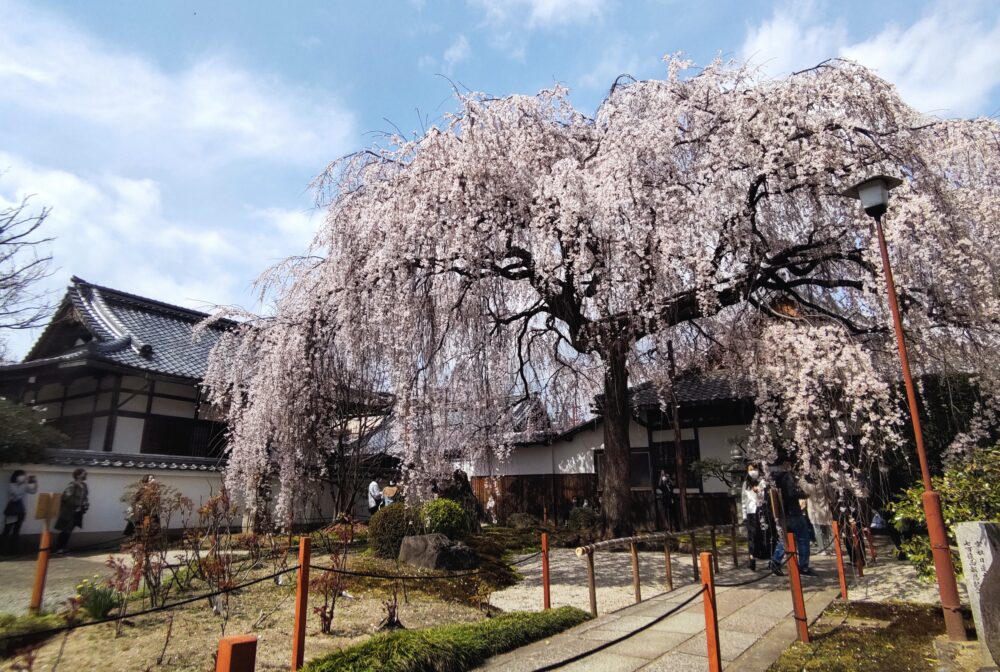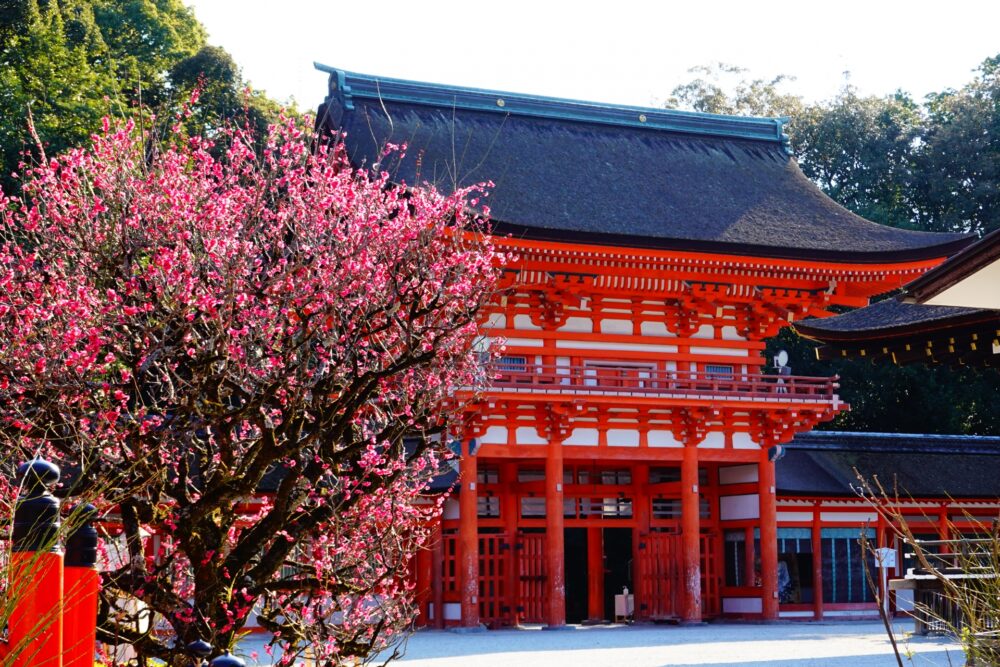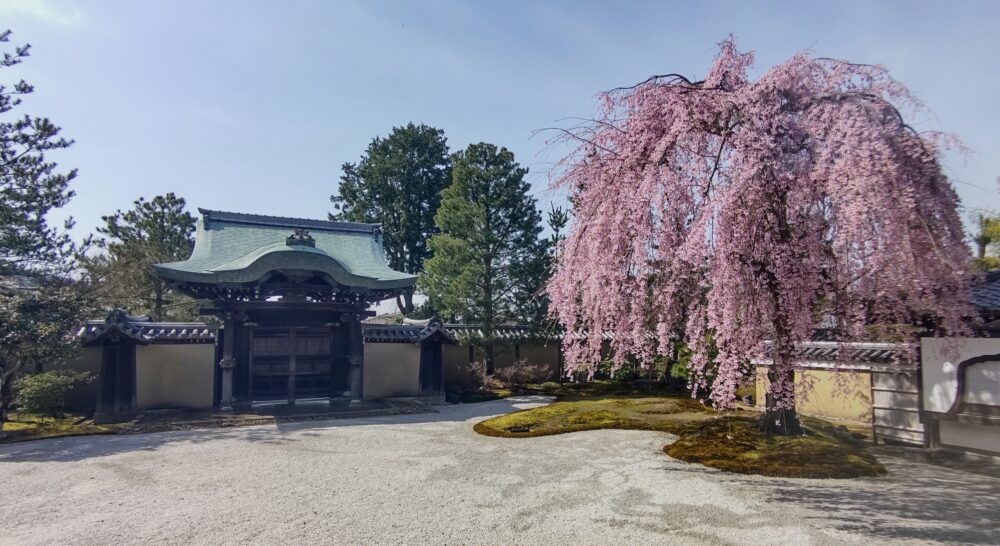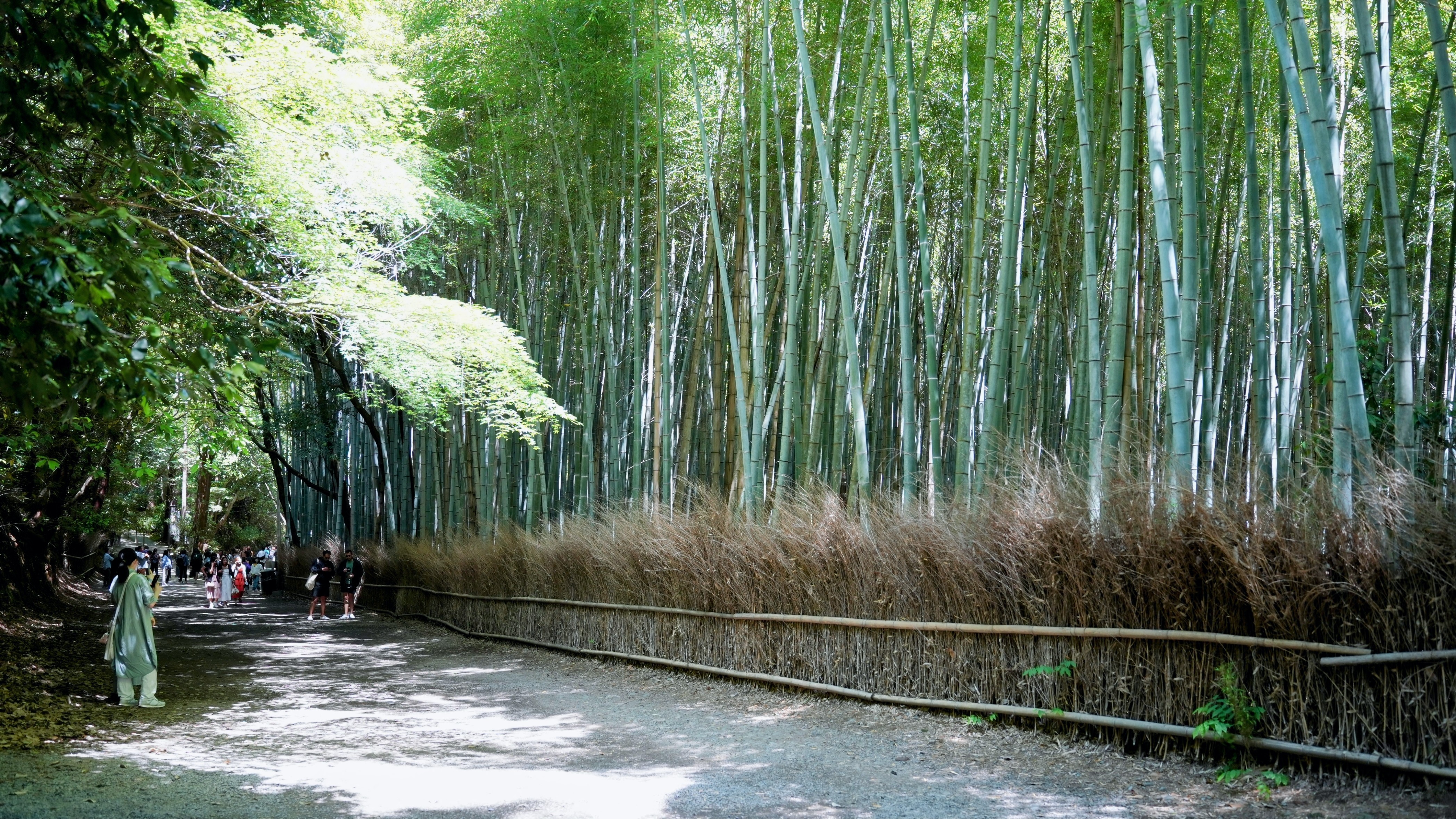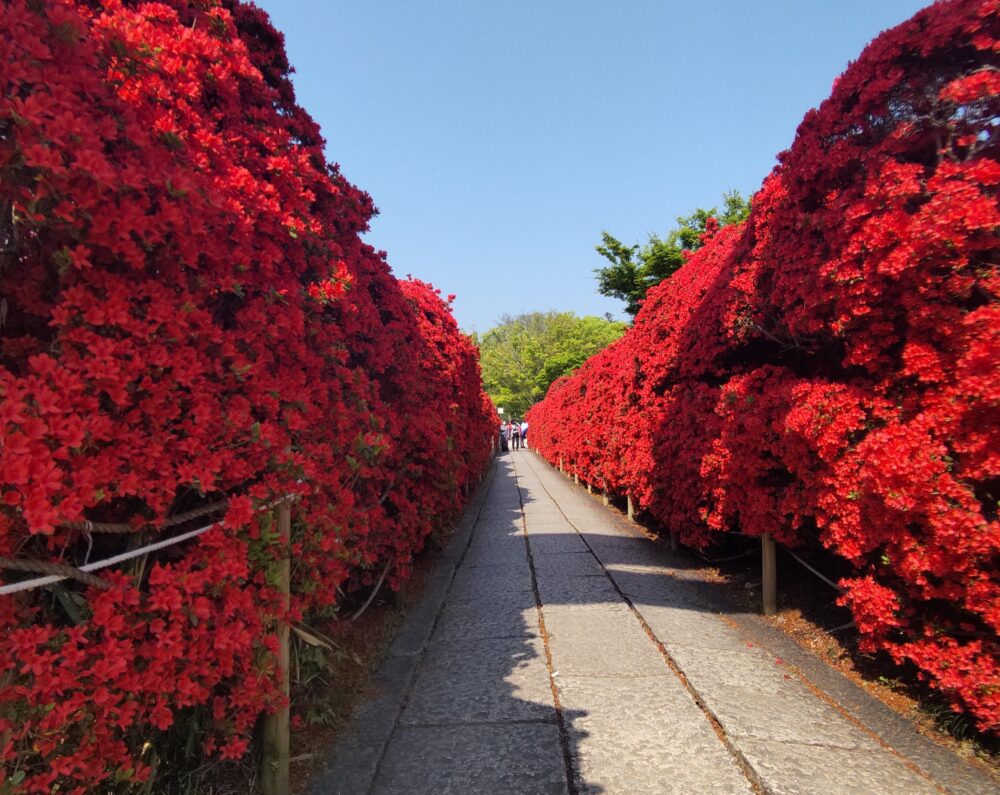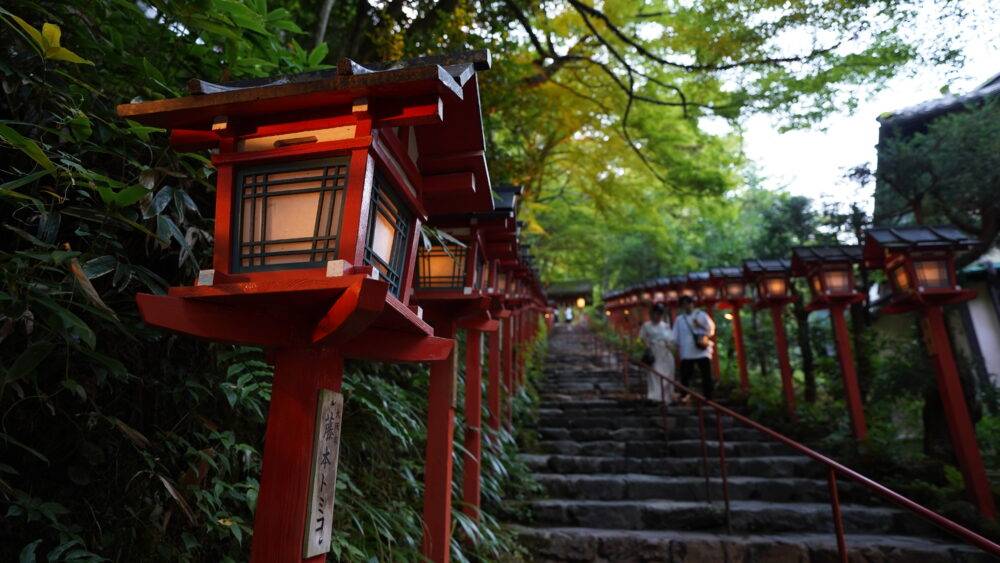The 5 Best Japanese Garden in Winter Season | Travel Kyoto in 2025
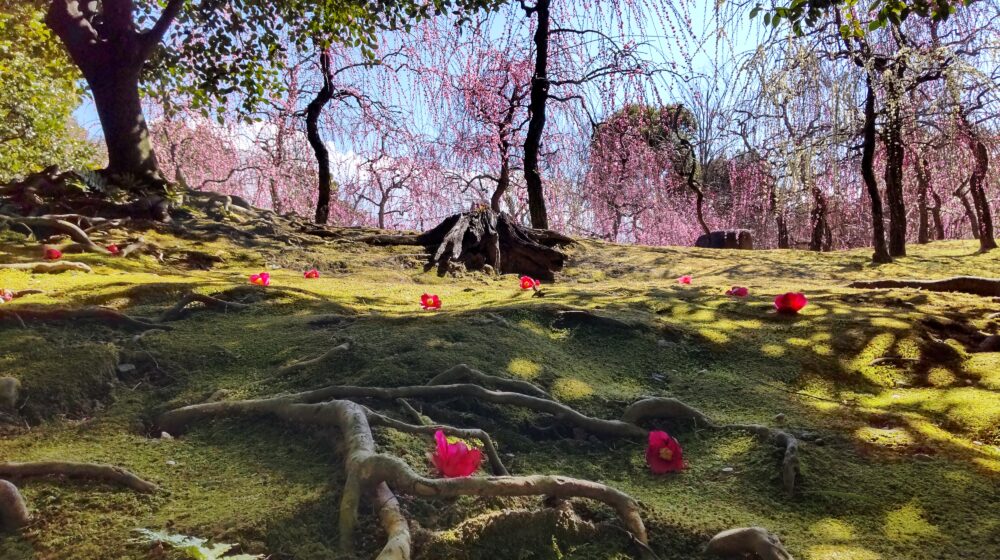
The main traveling season in Kyoto is not only known for spring and fall, but also winter. Especially, if you want to escape the crowds while traveling in Kyoto, winter season is a great choice.
Wintertime in Kyoto is from mid-December to mid-March when the average temperature is 5.6℃(42°F), a cold temperature and possible falls of sleet or snow. Even in such a harsh environment, there are plants that bloom beautifully in Japanese gardens.
Here is 5 best Japanese gardens and when is the best time in winter, you should visit.
Shinsenen (from mid-December to mid-January)
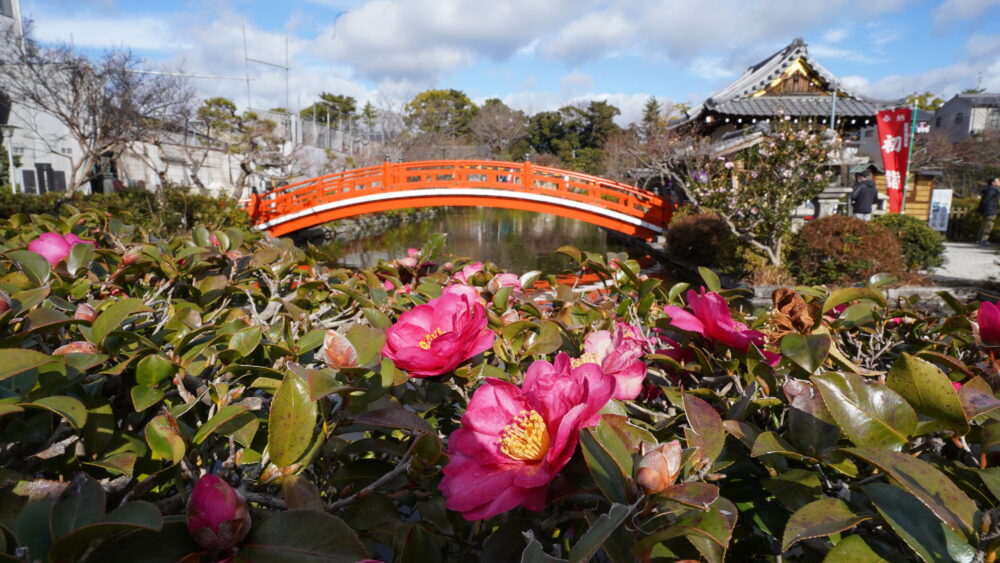
Shinsenen (meaning God spring garden) is Shingon buddhist temple, located in center of the modern Kyoto city.It was first built in 794 for the garden of imperial, consequently, There is the strolling pond garden: one of the Japanese garden style.Visitors walk a relaxing path beside the huge pond, surrounding copse and shrubs with seasonal beautiful flowers.
The highlight is a stunning view(above picture) that is hedges of camellia sasanquas which are evergreen trees, producing elegant pink flowers with vermilion-colored Taiko-bashi which is arched bridge over the pond. Many tourists visit here to see lovely camellia sasanquas: white and red flower from mid-December to mid-January.
Information
Open hours
The Shinsenen garden
7:00 – 20:00
Temple office (for Omikuji, Goshuin)
9:00 – 17:00
Admission
Free
Regular holiday
None
Official site(Japanese only)
http://www.shinsenen.org
Address
166 Monzencho, Nakagyo Ward, Kyoto, 604-8306
It’s tree minutes walk away from nearest station“Nijojo-mae” to Shinsenen.
Kinkakuji temple(Rokuonji) | from late January to mid-February
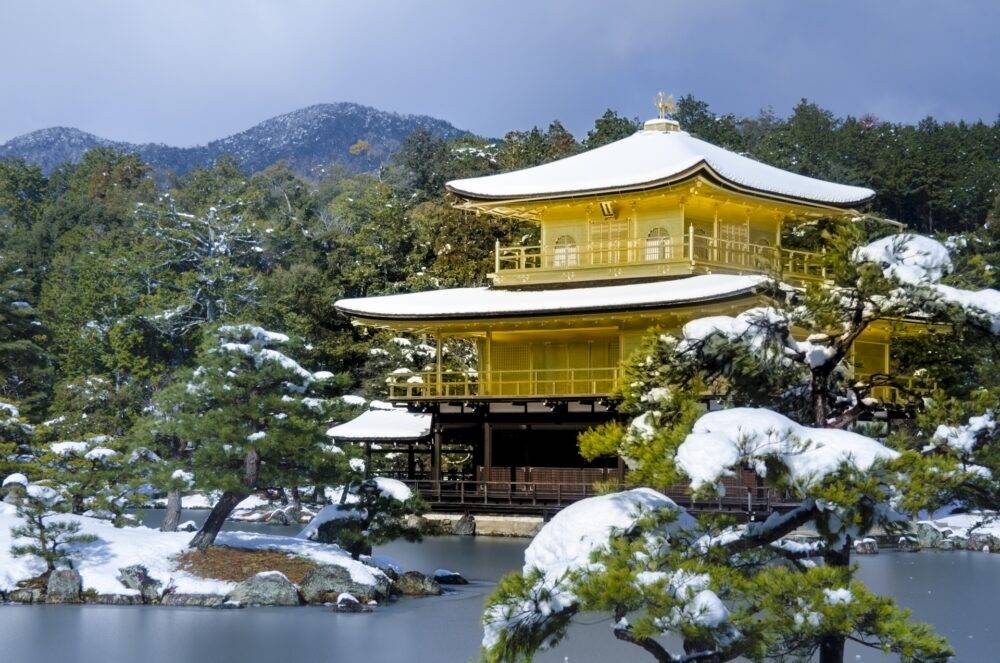
The Kinkakuji temple(Rokuonji) is famous as a golden pavilion, whose upper floors and phenix on the top are covered in gold leaf. In addition to the beautiful building, a temple’s garden is stunning : a huge overlooking pond, a rocky islands with black pines, which have thick dark green needle-shaped leaves and a walking path surrounded by red pines with soft bright green needle leaves.
The best season is winter from late January to mid-February when the golden pavilion and garden are blanketed in snow. The magical view(picture) combined with a golden yellow and a snow white and a green leaf takes the visitor’s breath away.
Information
Open hours
9:00 – 17:00
Admission
Adult (High school student or older) : 400yen
Child : 300yen
Regular holiday
None
Official site(English)
https://www.shokoku-ji.jp/en/kinkakuji/
Address
1 Kinkakujicho, Kita Ward, Kyoto, 603-8361
It’s 20 minutes walk away from “Kitanohakubai-cho” station on Landen Kitano line to Kinkakuji.
Kitano Tenmangu Shrine | from early February to mid-March.
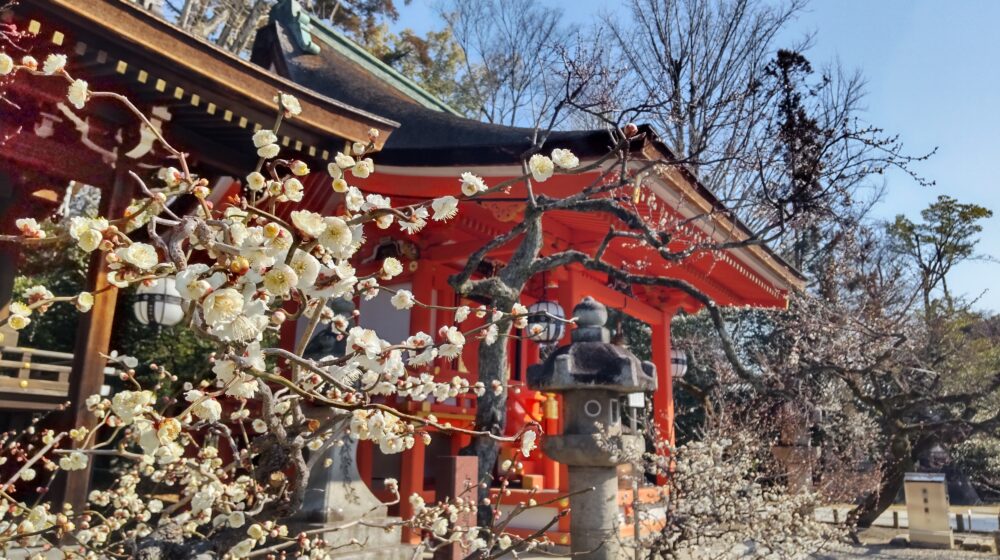
One of the biggest shrines is Kitano Tenmangu shrine, dedicated to Sugawara-no-MIchizane that is known as the god of academics, located northwest in Kyoto city.
Sugawara-no-Michizane likes plums, thus the gardener plant a lot of plum trees on the Kitano Tenmangū shrine premises. Especially there is a plum garden where over 1,500 trees and 50 different varieties bloom from early-February to mid-March. A lot of visitors are attracted to beautiful pink, red and white plum flowers with fruity fragrance.
Information
Open hours
Kitano Tenmangū shrine premises
6:30 – 18:00
Temple office (for Omikuji, Goshuin)
9:00 – 17:30
Plum Garden(Open from early-February to mid-March)
9:00 – 16:00
Admission
| Place | Entry Fee |
| The Kitano Tenmangū shrine premises | Free |
| Plum Garden | Adult : 1200yen Child(Elementary school students or younger) : 400 yen |
Regular holiday
None
Official site(English)
https://kitanotenmangu.or.jp/en/
Address
Bakurocho, Kamigyo Ward, Kyoto, 602-8386
Its 6 minutes walk away from “Kitanohakubai-cho” station on Landen Kitano line to Kitanotenmangu shrine.
Shimogamo Shrine (late February to early March)
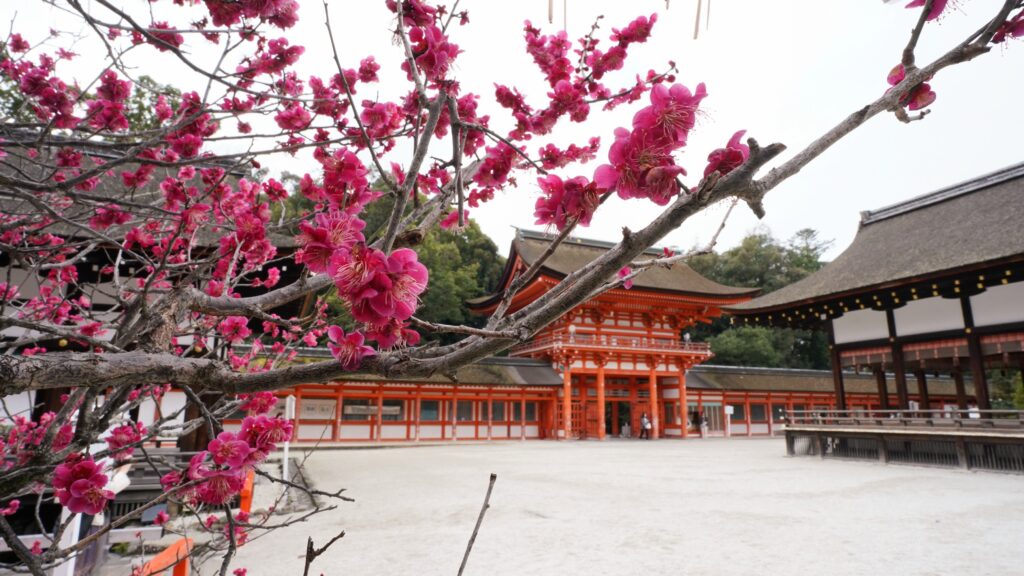
Shimogamo Shrine, located in the northeastern part of Kyoto City, is one of the most important and oldest shrines in Kyoto. Records indicate that the shrine’s sacred enclosure was repaired in 90 B.C. during the reign of Emperor Sujin, suggesting that the shrine existed and was revered even earlier. Because of its significance, it has been designated a UNESCO World Heritage Site.
Northeast of Shimogamo Shrine is a remarkable plum tree known as “Korin no Ume. The tree’s name is a tribute to the famous Edo period painter Ogata Korin, whose iconic national treasure, “Red and White Plum Blossoms,” is said to have been inspired by this plum tree. Each year, from late February to early March, this solitary tree bursts into bloom with a profusion of delicate pink blossoms, creating a breathtaking sight against the backdrop of the shrine’s iconic vermilion gate.
Information
Open hours
6:00 – 17:00
Admission
Free
Regular holiday
None
Address
〒606-0807 Kyoto, Sakyo Ward, Shimogamo Izumikawacho, 59
- 12-minutes walk from nearest station “Demachi Yanagi” station to Shimogamo shrine.
- 2-minutes walk from nearest bus stop “Shimogamo jinjia mae” to Shimogamo shrine.
Official Website
Shimogamo Shrine(English Text)
Jonangu shrine | from late-February to mid-March

When Heian period was established in 794, Jonangu shrine had been built for emperors and nobles to protect themself from directional misfortune. Now a days, Many people visit Jonangu shrine to see Japanese gardens ” Shinen ”, surrounding the shrine buildings, which are five distinct gardens with seasonal flowers and wonderful path.
The highlight is a heavenly view: camellia flowers, falling on the ground, and weeping plum, blooming behind. Typically, Weeping plum produce flower from late February to mid-March, which is later than normal.
Information
Open hours
Jonangu premises
9:00 – 17:30
Shinen(Japanese garden)
9:00 – 16:30
Admission
| Place | Fee |
| Jonangu premises | Free |
| Shinen(Japanese garden) from 1st January to 30th June and 1st September to December 31st | Adult : 800yen Child (Elementary school students or younger) : 500yen |
| Shinen(Small Japanese garden ) from 1st July to 31st August | Adult or Child : 300yen |
Address
〒612-8459 Kyoto, Fushimi Ward, Nakajimatobarikyucho, 7
It’s 15 minutes walk away from “Takeda” station on Kyoto municipal subway line and Kintetsu railway line to Jonangu shrine.
Official site(English)
https://www.jonangu.com/english.html
